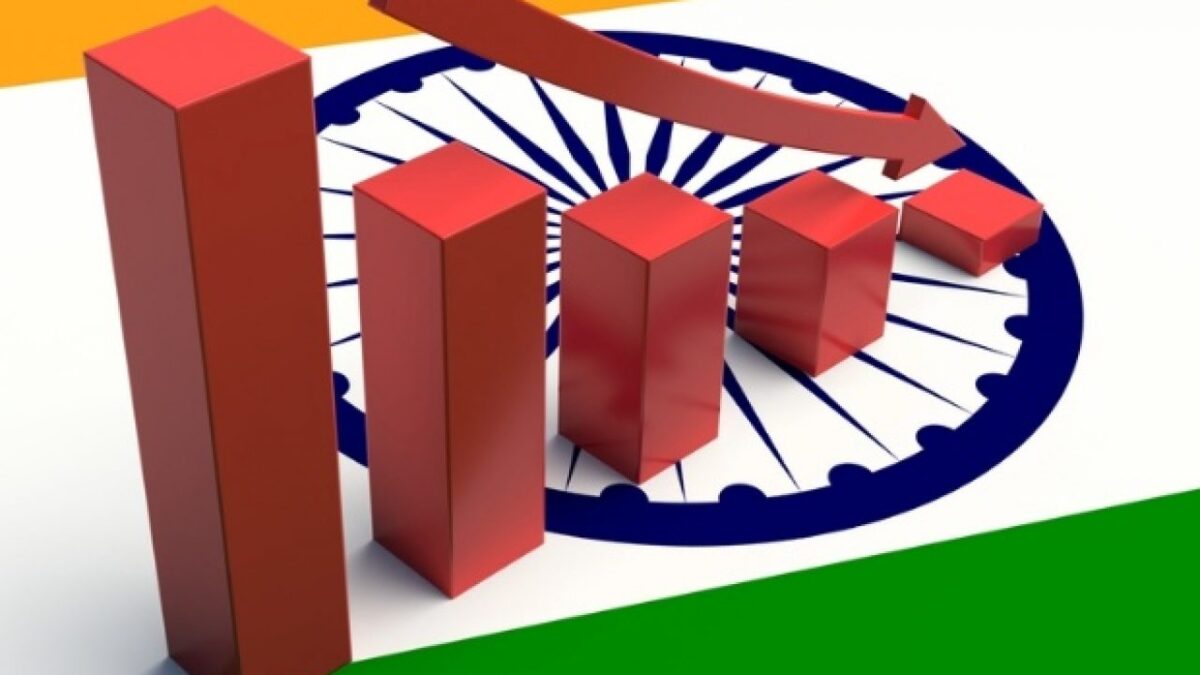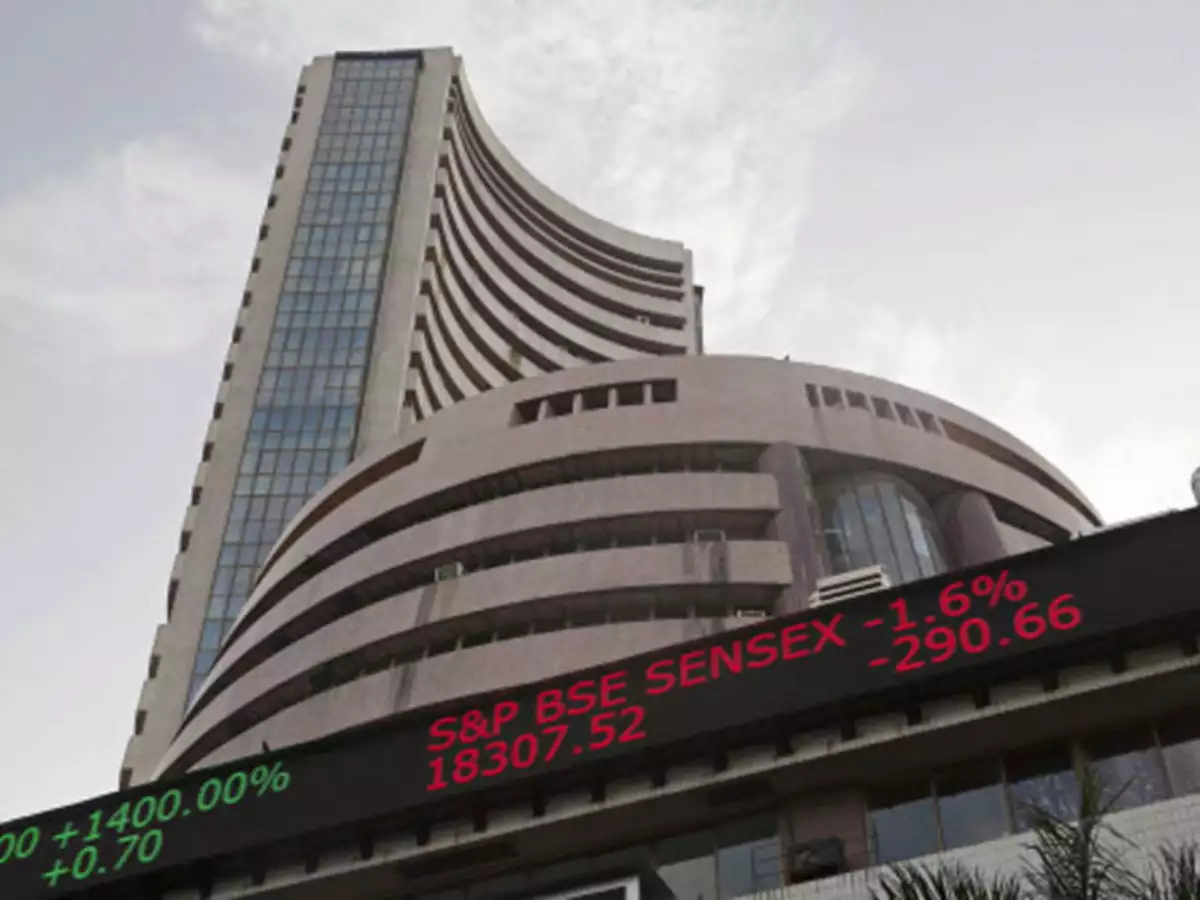India Is Rapidly Losing Its Foreign Investors. What Could Be The Reason?

One of the world’s emerging markets, all feted and celebrated, India now watches a massive change in investor sentiment. Ever since October 2021 have foreign portfolio investors withdrawn the massive amount of $33 billion, almost ₹260,000 crore, from the Indian stock market. A sharp reversal from India’s post-pandemic growth boom, when it was being considered a safe haven by global investors seeking an alternative to China’s regulatory and geopolitical risks, is where India stands today.
While it has priced itself in greater valuations, due to increased global monetary tightening as well as higher acceptance of markets appearing more appealling to global investors, record outflow of capital is being witnessed in India.
India’s Slow Economic Growth And Increasing Inflation
For example, part of the reasons for record outflows from India are particular anxieties about the country’s economic fundamentals. Growth in the Indian economy has flagged after having grown fast during the pandemic when global investors flocked to its relatively open and stable markets; so big questions in the post-pandemic recovery are whether growth follows this downtrend, making more and more investors reassess their positions.
 On the other hand, economists believe growth will slow down only to just below 7 per cent in the fiscal year 2024-25, a steep decline from more than 8 per cent that was recorded in the last fiscal. At this juncture, there are both domestic and global factors. Domestically, the increase in inflationary pressure is eating up consumers’ purchasing power, and the push of high oil prices will strain the current account deficit. Tightening of financial conditions on the global front, especially with the US Federal Reserve series of interest rate hikes, is also cooling off India’s economic growth.
On the other hand, economists believe growth will slow down only to just below 7 per cent in the fiscal year 2024-25, a steep decline from more than 8 per cent that was recorded in the last fiscal. At this juncture, there are both domestic and global factors. Domestically, the increase in inflationary pressure is eating up consumers’ purchasing power, and the push of high oil prices will strain the current account deficit. Tightening of financial conditions on the global front, especially with the US Federal Reserve series of interest rate hikes, is also cooling off India’s economic growth.
“Inflationary pressures are getting more difficult to manage, more so when the persevered global uncertainty doesn’t abate,” said Pranjal Srivastava, Senior Economist at the Bank of India.
“The factors that are dragging down growth are too large in number and size to be ignored,” he said. Inflation at 8% calls for tighter monetary policies by the Reserve Bank of India (RBI), further dampening growth prospects.
High inflation, especially consumer goods inflation, is hitting consumer sentiment in the markets, particularly the urban markets. There, the middle class started getting pinched by the increasing price factor.
Demand has been relatively weak, though consistent with weak sales all over sectors- automobiles and even consumer goods. However, rural markets which have got a good monsoon and are recording better farm incomes still seem to have some resilience. But even consumption in India’s more urbanized space, which after all forms the bulk of the economy, is also sputtering. In its latest analysis, Goldman Sachs warned that India’s growth trajectory is not sustainable.
According to Goldman Sachs, the three main risks to India’s economic outlook are high oil prices in a continued upward curve, tight monetary conditions, and thinning fiscal space. The country’s trade balance has taken the brunt of the hefty price of crude oil as India is a net importer of crude oil.
Besides unimpressive growth, the inflation rate of India is still way too high to balance out the attractiveness of the Indian economy with the rest of the emerging markets. India’s growth story is surely under pressure from multiple fronts, noted Schroders’ Senior Emerging Markets Economist David Rees. “While India has benefited from the ‘China-plus-one’ strategy, the emerging inflation and slowing world economy are making it less of a gamble for investors.”
High Valuations And Market Over-valuation
This is also another huge reason for outflows from foreigners as Indian stocks are getting highly over-valued. Indian equity market has witnessed an extraordinary upsurge in recent years. The benchmark Nifty 50 index has surged significantly since the relief phase or post-pandemic recovery began, however, it is getting over-valued to attract foreign investors.
 The P/E ratio in the Indian stock market, currently at about 22.3, is much too high relative to its peers like China and Indonesia, with their P/E ratio of 10.5. Such high valuation is one of the major disincentives for international investors scouring the globe to look for value. Indian companies said their earnings have been good, although that growth pace has started to slow down, which makes the perception that the stocks look overvalued even stronger.
The P/E ratio in the Indian stock market, currently at about 22.3, is much too high relative to its peers like China and Indonesia, with their P/E ratio of 10.5. Such high valuation is one of the major disincentives for international investors scouring the globe to look for value. Indian companies said their earnings have been good, although that growth pace has started to slow down, which makes the perception that the stocks look overvalued even stronger.
“The Indian market has been a classic case of ‘irrational exuberance,’ said Shobhit Agarwal, Portfolio Manager at Morgan Stanley. “Investors piled into Indian stocks because the country was viewed as a haven; valuations, however, are unsustainable at these levels.”
Besides, the P/E of the Nifty 50 index is a little more than its five-year average, and this further smacks that the market is at a premium.
Other investors are increasingly looking for markets that give them better value to their investment especially with the impetus of rising interest globally, which makes equities less appealing as opposed to fixed income papers.
Capital has flown out of riskier assets such as Indian equities, and, partly because of these challenges, there is the added reality that FIIs have become the lifeline for most sectors in India, especially financials, IT, autos, and energy. The market has been extremely sensitive to the perceptions of global investors about these sectors and has faced extreme discomfort due to the withdrawal of foreign funds from such sectors.
Global Capital Reallocation To China
For several months now, the headwinds battering emerging market economies through tighter global conditions for finance and geopolitical uncertainties have transformed the global investment environment. However, the most important development was the renewed appeal of China as foreign capital inflows surged in response to stimulus measures intended at reviving the country’s slowing economy.
China’s government promised to roll back the post-COVID shocks through a variety of measures that have a lot of stimulation, easy monetary policy, and high government spending.
As a result of this new development, there has been a massive influx of foreign investment into the Chinese markets, where around $19 billion will be flowing into the country over a very short period in 2024. Investors and investors have been showing concern over the fall of their inflows in the Indian market as they shift their capital to China, projecting an undervalued stock for the years of stagnation.
 The so-called “Buy China, Sell India” narrative has picked steam among global investors who believe that China’s fiscal stimulus will cause a more robust growth rebound than is seen in India’s slow recovery. That would explain why Rahul Khurana, Head of Emerging Market Equities at BlackRock, believes China’s economy is starting to stabilize and that with the government policies switching towards stimulus, it will outperform India in the coming quarters.
The so-called “Buy China, Sell India” narrative has picked steam among global investors who believe that China’s fiscal stimulus will cause a more robust growth rebound than is seen in India’s slow recovery. That would explain why Rahul Khurana, Head of Emerging Market Equities at BlackRock, believes China’s economy is starting to stabilize and that with the government policies switching towards stimulus, it will outperform India in the coming quarters.
“India has become relatively less attractive, especially as global investors look for markets with greater upside potential.” Yet, this does not mean pullback from India is an absolute consequence of a shift to the east.
Indian outflows are being impacted by the horizon of rising inflation, relatively high valuations in this space, and geopolitical risks, particularly in the Middle East. The “Buy China, Sell India” story is an over-simplification as the economic fundamentals in China are far from perfect. China still has quite a few structural challenges in hand, including huge levels of debt, a weakening demographic profile, and ongoing trade tensions with the West.
All these aside, however, the relative attractiveness of stocks in China, which has just exited a disastrous performance phase, has been quite sufficient reasons for many to seize what they believe is an excellent buying opportunity. Reforms in the Chinese market, with stimulus efforts, have injected optimism into this economy compared to issues that characterize the Indian economy.
Rising Interest Rates And Global Risk Aversion
Of course, another factor threatening the outflows is the tightening of global monetary policy. In this regard, the US Federal Reserve has been drastically raising interest rates to combat inflation, which is increasingly worrying investors.
Therefore, once interest rates of the developed economies begin to rise, the bond markets become more attractive to investors looking for relatively better safe havens, especially in the United States. For instance, treasury bonds now pay more in yield and look relatively more attractive compared with those of the riskier equities of emerging markets.
It has ushered a changed scenario in capital flows in the international system as investors liquidate their investments in places like India and re-invest their capital in developed economies into seemingly safer and much higher-yielding assets. This is particularly true for the risk-averse institutional investor with greater sensitivity to global interest rate movements.
Capital is fleeing emerging, markets-including a textbook case like India-as foreign capital inflows that fueled growth in the past dry-up, driven by rising borrowing costs and a rising greenback, said Indranil Sengupta, chief economist at Bank of America. “The investment landscape has shifted with the global tightening of monetary policy,” he said.
“With U.S. yields rising and the US dollar strengthening, emerging market equities have become much less appealing, and India is bearing the brunt of this shift. Geopolitical tensions, mainly in the Middle East, have further heightened this risk aversion. There is this heightened wariness of risking money in countries that are vulnerable to political instability. Therefore, India stands less attractive vis-a-vis markets that are more stable.”.
Structural Flaws In The Indian Economy And The Regulatory Framework
India, along with other structural and regulatory issues, has been termed as the biggest challenge for solid foreign investment. Though the Indian government has made a concerted effort to ease doing business towards FDI, many major areas remain untouched.
Highly bureaucratic processes, labor market reforms being delayed, and labyrinthine land acquisition procedures prevented businesses, as domestic as foreign, from enjoying efficient business operations.
 More critical reforms, such as liberalization in the labour market and changes in laws that govern the acquisition of land, have not occurred. Most foreign investors promise that such policies have not been achieved. The Make in India initiative by the Indian government gives a fillip to domestic manufacturing, but such regulatory bottlenecks have been holding this program from catching real ground. In stark contrast, other emerging markets, especially in Southeast Asia, have made regulations move more aggressively over the years.
More critical reforms, such as liberalization in the labour market and changes in laws that govern the acquisition of land, have not occurred. Most foreign investors promise that such policies have not been achieved. The Make in India initiative by the Indian government gives a fillip to domestic manufacturing, but such regulatory bottlenecks have been holding this program from catching real ground. In stark contrast, other emerging markets, especially in Southeast Asia, have made regulations move more aggressively over the years.
Clearly, one thing that Indians need is clear and predictable regulatory frameworks in many of the key sectors, which India still lacks. More importantly, though the intent is good, progress has been really slow on meaningful reforms, which makes it tough to invest with a lot of confidence,” Amit Chandra, Managing Director at Bain Capital, said.
Instead of being too diverse, a very few have come to dominate the Indian business landscape, which is also criticized for its monopolistic practices by the likes of the Adani Group.
The dominance across sectors ranging from energy to ports and airports has now led to intense debate over further concentration of economic power in fewer players’ hands with even fewer opportunities for fair play and healthy competition in the market.
The cosy relationship between the group and the government in vying to favor a few big players at the cost of creating a level playing field for all businesses has flagged much economic power. Perception of crony capitalism is a great deterrent to foreign investors keen on transparent business practices, fairness, and a level playing field. However, if interest rates and financial stress increase further, the system risk will worsen because the Adani Group heavily depends on debt financing.
Resilience Of The Domestic Investors
In a surprise move, the domestic investor base, despite mammoth outflows of foreign capital, has stayed on astonishingly well. Domestic retail investors also remained buoyant in October 2024, while inflows from domestic mutual funds and insurance companies continued to hold up the market. In all fairness, these foreign outflows will be cushioned by this shift toward domestic capital but will unlikely replace the scale of investments FPIs are making in the long term.
“The Indian retail investor has turned out to be the backbone of the market,” argues Nilesh Shah, managing director at Kotak Mahindra AMC. “While foreign investors have stepped back, local investors are stepping up with a long-term commitment to India’s growth story.”
However, going forward, India has to look inwardly at its weaknesses to maintain a place for it self as an investment destination in the long run in this changing global investment climate.
This series of challenges has led to rebalancing capital flows worldwide.
India still enjoys a great potential on the back of demographics, scale of the consumer market, and a rising middle class, while an economy slowing down, scorching valuation, a shift in capital flow at the global level, and inefficient regulatory frameworks are roping in cautious investors.
It is its ability to address these challenges that will determine whether the country can remain a beacon for long-term investment in case foreign capital continues to retreat from the Indian market.




